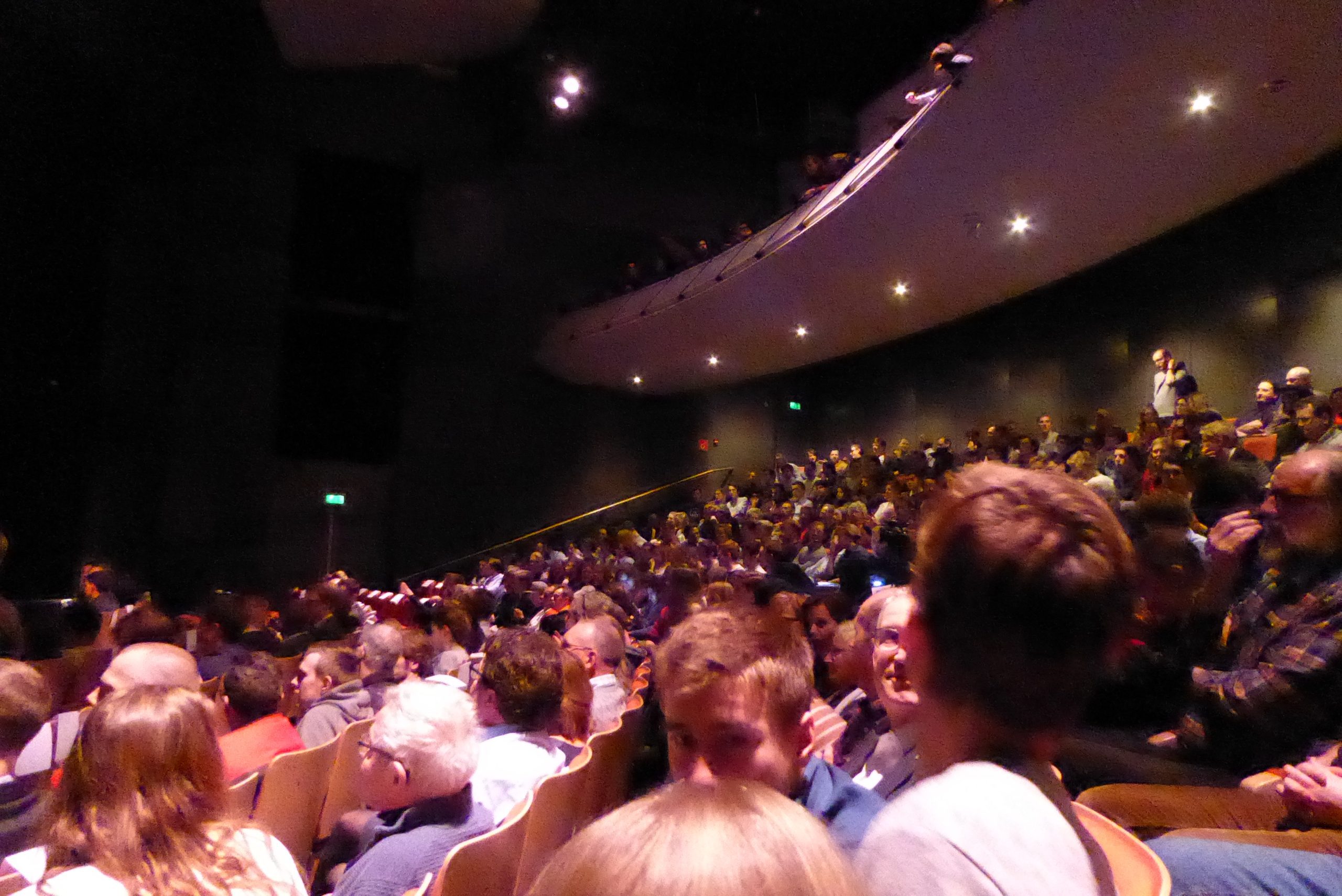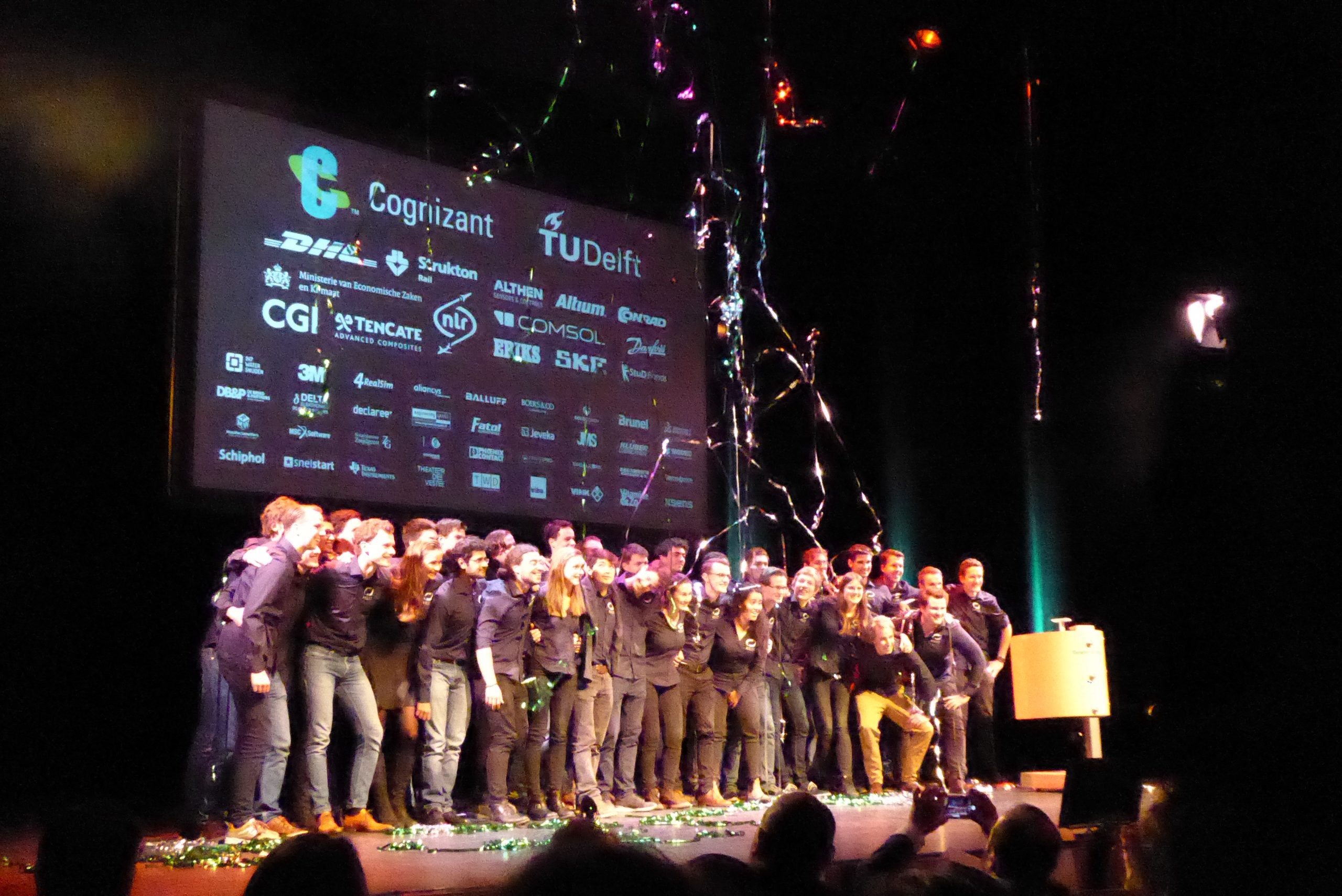Students, parents, and partners formed a long queue in front of the De Veste theatre last Tuesday night 20 February. They were all waiting to watch the Hyperloop Design Presentation.
Hyperloop team at the Design Presentation. (Photo: Jos Wassink)
Both the theatre and the foyer were filled to the brim. The Hyperloop must be the sexiest form of public transport ever. Team manager, Eduard Schneiders, reminded the audience of the Hyperloop’s characteristics in a techno-cool chat style that evoked memories of Steve Jobs or Elon Musk.
Powered pods flashing through near-vacuum tubes at almost the speed of sound could bridge the distance from Amsterdam to Paris in half an hour, said Schneiders. Hyperloop promises to be not only fast but also clean and energy efficient. No wonder it’s the formula for the future.
The target is setting a new speed record
Last year, the first Delft Hyperloop team became the overall winner of the Pod Competition in January. This year, for the second Delft Hyperloop team, the gloves are off: speed is all that counts. The target is setting a new speed record on the 1.2 kilometre test track in SpaceX’s backyard in California. The current record is 384 km/h. New trials will be held on 22 July 2018.
Chief engineer Vlad Petrescu explained the concept behind the design of their Atlas 01. It has a modular set-up. The same launcher can carry an economy pod (seating six persons), a luxury one (four chairs) or a cargo pod.
To reach maximum speed over 1.2 kilometres, the idea is to accelerate at maximum power (faster than an airliner), followed by power braking at the very last split-second. In all, the test run will take about 15 seconds.
Since last October, the 37 person team has spent 50,000 hours on the design, resulting in 600 pages and 1,600 part specifications. The good news is that the Delft Hyperloop team has qualified as one of the twenty teams to be invited over to SpaceX.
Once there, only three teams will be offered a chance for an actual launch. The Delft team, now certain of a place in the competition, wants to make sure it passes every test by extensive pre-testing in Delft.
 Full house at De Veste. (Photo: Jos Wassink)
Full house at De Veste. (Photo: Jos Wassink)Do you have a question or comment about this article?
j.w.wassink@tudelft.nl


Comments are closed.